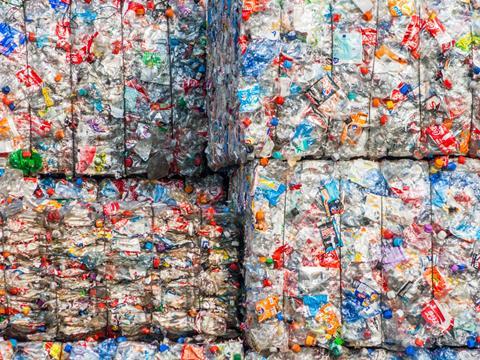
A recent study from Wageningen Food & Biobased Research found that only 27% of plastic packaging on the Dutch market is easily recyclable. We spoke with Marieke Brouwer, one of the scientists behind the project, to learn about how the industry can look to boost this rate.
To start us off, please could you give our readers a general overview of the study and its key findings?
We studied the percentage of well-recyclable packages on the Dutch market and compared this with data of 2014 and 2017. Also, we made a more detailed analysis of the recyclability of the packages taking into account all their design aspects.
This rendered insights into the percentage of well- and limited recyclable packages on the Dutch market and the causes for limited recyclability. Next, we analysed if these limited recyclable packages could be easily re-designed or if the redesign of these packages would cause important dilemmas that need to be solved (food waste, for example).
The result of the study can be best shown in a graph, with a key finding being that the amount of well-recyclable packages on the Dutch market is 27%.
-(002).jpg)
Tell us more about the mechanics of the study - how was it conducted?
We took samples of municipal solid waste and lightweight packaging waste (in the Netherlands also called PMD: plastics, metals and beverage cartons) and sorted these waste streams. Herewith, we calculated the distribution of packaging types on the Dutch market in 2021. We defined the recyclability of the packaging types.
Also, we defined package types that should be well-recyclable in case their designs matched the requirements of the recycling scheme. These packages were further analysed in greater detail with regard to their design characteristics. This resulted in the amount of well- and limited-recyclable packages on the Dutch market.
One promising conclusion from the report is that many designs can be adjusted fairly simply in order to make them easier to recycle. Can you give us some examples?
Yes, packages where, for instance, the label is too big can be fitted with a smaller label. The type of material of the label and the glue are also important. The label should thus be small enough not to interfere with the sorting system.
The glue should be water-soluble so that the label can be removed from the packaging in the recycling process. And the material of the label should be chosen not to interfere with the recycling process. For instance, a paper label will dissolve in the water and can cause impurities if particles end up in recycled plastic.
You say that, in order to make packs more recyclable, marketing may have to take a back seat. Could you explain this to our readers?
To use the label example again: brightly coloured and oversized labels are chosen for their marketing function. However, these labels are not the right choice when it comes to recyclability, since they hamper sorting, and the excessive use of ink chemicals causes the recycled plastic to be contaminated.
Most of the time, these labels are glued to the packaging with glues that are so strong that the label will stick to the packaging in the recycling process, resulting in the contamination of the recycled plastic. Other examples are valves and spray guns. These packaging components are used to provide convenience to the consumer but are unwanted from a recyclability perspective.
The study found that roughly a quarter of all packs are difficult to design for recycling. Could you break this finding down for us?
These are two types of packages that fit this mould.
The first is very small packages. These will get lost in the sorting process of the recycling scheme due to their size. However, it will not make sense to make them bigger, as that only will result in over-packing for a small product.
The second is the packages that would cause serious dilemmas – mainly solutions for perishable products (cheese, meat, etc.). These products need protective packaging that extends their shelf-life and thus less food is wasted. Most of these packages are, however, limited-recyclable. But at the moment there are also no real alternatives on the market that are well-recyclable.
Therefore, whenever packages are redesigned to make them fit in the circular economy, it is wise to verify that the shelf life of the product is not reduced. A shortened shelf-life can translate into more food losses and that usually results in large negative environmental impacts that is not outweighed by the improved recyclability of the package.
In your view, how can the share of well-recyclable packages be raised?
The FMCG industry should start with the easy changes: design the labels, caps, etc. of the well-recyclable packages in such a way that they fit in the recycling system. Next, the more difficult issues can be tackled, such as the packages of the perishable product.
Also, the recycling technologies for some packaging types need to be further developed – PET trays, for instance.
Additionally, for some products, it can be better to use alternative materials or designs to solve the recycling issues. In that case, the option should fit into the alternative collection and recycling scheme. As we see some 'regrettable replacements' (a packaging made of a different material, for instance, paper with a plastic layer, which looks more sustainable, but is not as it cannot be recycled in any recycling scheme) on the market, this is not always the best option.











